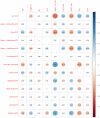Assessing falls in the elderly population using G-STRIDE foot-mounted inertial sensor
- PMID: 37280388
- PMCID: PMC10244449
- DOI: 10.1038/s41598-023-36241-x
Assessing falls in the elderly population using G-STRIDE foot-mounted inertial sensor
Abstract
Falls are one of the main concerns in the elderly population due to their high prevalence and associated consequences. Guidelines for the management of the elder with falls are comprised of multidimensional assessments, especially gait and balance. Daily clinical practice needs for timely, effortless, and precise tools to assess gait. This work presents the clinical validation of the G-STRIDE system, a 6-axis inertial measurement unit (IMU) with onboard processing algorithms, that allows the calculation of walking-related metrics correlated with clinical markers of fall risk. A cross-sectional case-control study was conducted with 163 participants (falls and non-falls groups). All volunteers were assessed with clinical scales and conducted a 15-min walking test at a self-selected pace while wearing the G-STRIDE. G-STRIDE is a low-cost solution to facilitate the transfer to society and clinical evaluations. It is open hardware and flexible and, thus, has the advantage of providing runtime data processing. Walking descriptors were derived from the device, and a correlation analysis was conducted between walking and clinical variables. G-STRIDE allowed measuring walking parameters in non-restricted walking conditions (e.g. hallway). Walking parameters statistically discriminate between falls and non-falls groups. We found good/excellent estimation accuracy (ICC = 0.885; [Formula: see text]) for walking speed, showing good/excellent correlation between gait speed and several clinical variables. G-STRIDE can calculate walking-related metrics that allow for discrimination between falls and non-falls groups, which correlates with clinical indicators of fall risk. A preliminary fall-risk assessment based on the walking parameters was found to improve the Timed Up and Go test in the identification of fallers.
© 2023. The Author(s).
Conflict of interest statement
The authors declare no competing interests.
Figures





References
-
- Summary of the Updated American Geriatrics Society/British Geriatrics Society Clinical Practice Guideline for Prevention of Falls in Older Persons. J. Am. Geriatr. Soc.59, 148–157. 10.1111/j.1532-5415.2010.03234.x(2011). - PubMed
Publication types
MeSH terms
LinkOut - more resources
Full Text Sources

